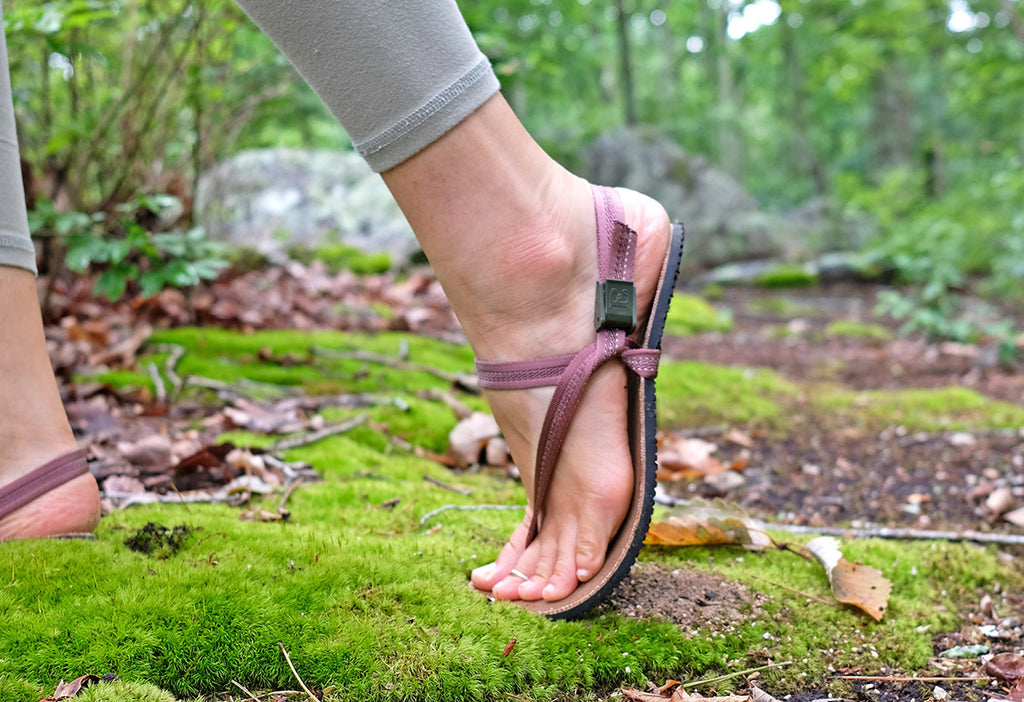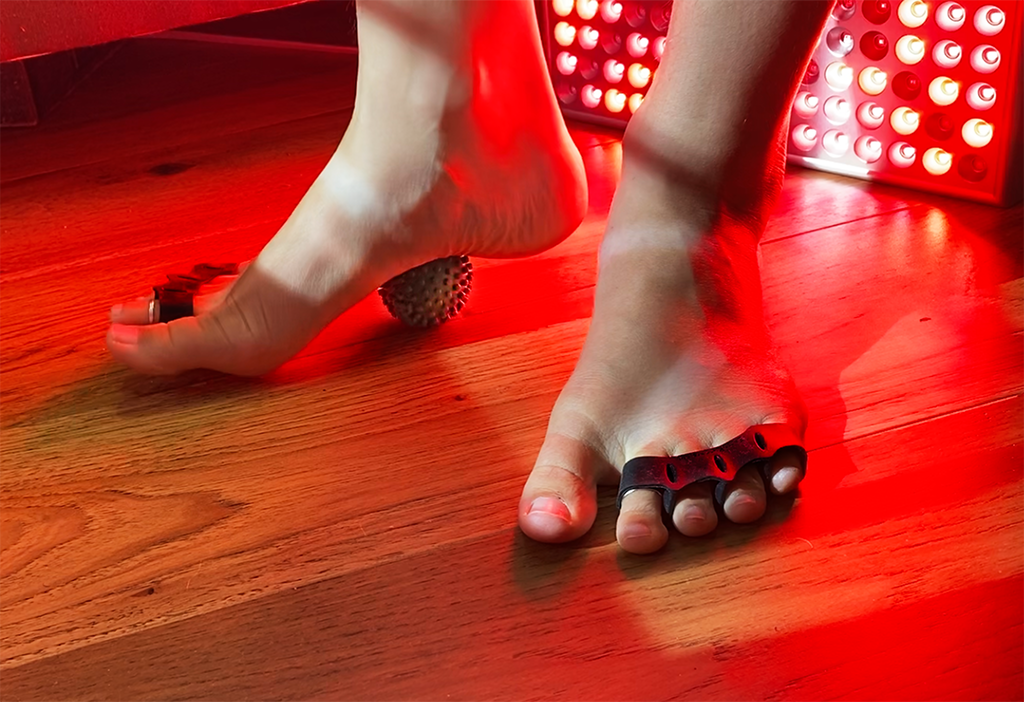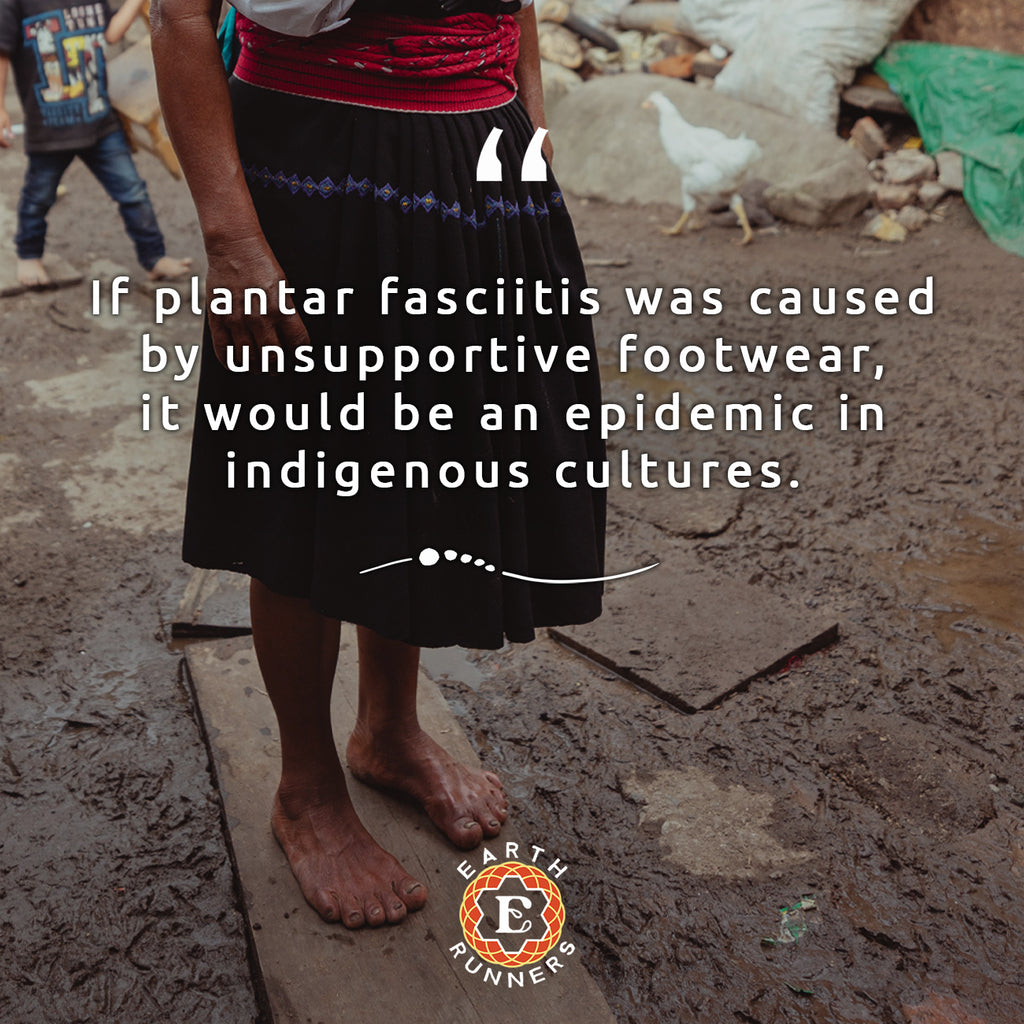Natural Remedies for Plantar Fasciitis: Reduce Plantar Fasciitis Pain Naturally
Plantar fasciitis is a common condition that causes pain in the heel and bottom of the foot. It occurs when the plantar fascia, a thick band of tissue that runs along the bottom of the foot, becomes inflamed or injured. This condition can be caused by a variety of factors, including poor foot mechanics, overuse, tight calf muscles, and unnatural footwear. While there are many conventional treatments available for plantar fasciitis, natural remedies for plantar fasciitis can be extremely effective in alleviating plantar fascia pain, promoting healing, as well as for preventing plantar fasciitis in the first place!

Stretching and Strengthening Exercises
Stretching and strengthening exercises can help reduce plantar fasciitis pain naturally and prevent further injury. Stretching exercises can help to loosen the calf muscles and plantar fascia, while strengthening exercises can help to improve foot mechanics and reduce stress on the plantar fascia. Some effective exercises include:
Calf stretches: Stand facing a wall with your hands on the wall at shoulder height. Step one foot back and press the heel into the floor while keeping the knee straight. Hold for 15-30 seconds and repeat on the other foot.
Plantar fascia stretch: Sit with your legs straight out in front of you. Loop a towel or exercise band around the ball of your foot and pull your toes back towards your shin until you feel a stretch in the arch of your foot. Hold for 15-30 seconds and repeat on the other foot.Toe curls: Place a towel on the floor and use your toes to scrunch it up towards you. Repeat for 10-15 reps on each foot.
Footwear Modifications

Footwear modifications can be helpful in alleviating plantar fasciitis pain naturally and promoting healing. Minimalist footwear, such as Earth Runners sandals, can be a good option for people with plantar fasciitis. Footwear with a zero-drop heel and thin, flexible sole are designed to mimic the feeling of barefoot walking, which provide more biofeedback from the ground and can help to improve foot mechanics and reduce stress on the plantar fascia.

Keep in mind that transitioning to minimalist footwear can take some time and patience. If you're used to wearing shoes with a lot of support and cushioning, it can take several weeks or even months to adjust to minimalist footwear, especially if you use minimalist footwear for running. It's important to start slowly and gradually increase the amount of time you spend wearing them to avoid injury from diving in too fast. Check out our blog post on Transitioning to Minimalist Footwear Safely for more tips.

Massage and Foam Rolling

Massage and foam rolling can help to loosen tight muscles and fascia, improve circulation, and reduce plantar fasciitis pain naturally. You can use a Foot Rub Restoration ball (or other ball you have at home) to massage the bottom of your foot and calf muscles. Roll your foot back and forth over the ball, applying gentle pressure. You can also use your hands to massage the bottom of your foot and heel.
Ice Therapy

Ice therapy can help to reduce inflammation and alleviate plantar fasciitis pain naturally in the affected area. You can apply an ice pack or bag of frozen peas to your heel for 15-20 minutes at a time, several times a day. Make sure to wrap the ice pack in a towel or cloth to protect your skin from direct contact with the ice. Allow for some time to let your feet warm back up before doing anything too demanding on your feet to prevent shocking and straining your plantar fascia.
Epsom Salt Soaks

Another popular natural remedy for plantar fasciitis is an epsom salt foot soak, which can help to reduce inflammation and pain in the foot. Add 1/2 cup of Epsom salt to a basin of warm water and soak your feet for a 15-20 minute session. You can do this as often as once or twice a day in times of intense inflammation or pain.
Strengthen Your Plantar Fascia with Weighted Carry
Once your plantar fascia is on the mend one of the best things you can do to further your recovery and prevent future relapses is by performing weighted carry exercises in minimalist footwear. This does two things:
Firstly, it forces you to practice optimal barefoot walking form where you bare most of your body weight on the mid of your foot and use your whole body as a shock absorption system, as opposed to wearing over-engineered shoes which promotes heel striking. The added weight you are carrying exaggerates the consequences of bad form with resulting added impact and instability.
Secondly, weighted carry strengthens your feet via the extra load while performing the self correcting form as previously mentioned which trains ideal biomechanics. This can be done with a number of weights (heavily loaded day pack hiking with lots of water, backpacking for short stints, dumbbells, kettlebells, carrying rocks on the trail, etc.). Weighted carry has to be one of the oldest exercises and has so many benefits that don't stop at just your lower body but extend through the entire biomechanical chain.
Rest and Recovery
Rest and recovery are important for promoting healing and preventing further injury. It's also important to re-think any footwear that compromise your feet: a narrow toe box or a raised heel can negatively impact the plantar fascia, so wear minimalist footwear or go barefoot as much as possible.
Avoid activities that exacerbate the pain, and try to give your feet a break by taking time off from exercise or sports. You can also try gentle exercises like swimming or yoga that are low-impact and less likely to aggravate the condition.
Red Light Therapy

Red light therapy is a safe and effective natural remedy for plantar fasciitis that has shown promising results in clinical studies. By promoting collagen production and increasing circulation, red light therapy can help reduce inflammation and pain in the plantar fascia. (*,*)
Toe Spacers

Toe spacers are a simple and effective remedy for naturally healing plantar fasciitis. By helping to realign the toes, toe spacers can help improve the alignment of the foot and reduce pressure on the plantar fascia.
When the toes are crowded or overlapping, it can cause the foot to pronate (roll inward), which can lead to increased stress and strain on the plantar fascia. Toe spacers can help correct this alignment issue by encouraging the toes to spread out and relax.
In addition to reducing pressure on the plantar fascia, toe spacers can also improve circulation to the affected area and promote healing. Unlike other toe spacers which can become uncomfortable and are mainly worn while sitting at home, our Mobility Toe Spacers are designed to be worn even when you're walking around. Learn more about the benefits of toe spacers here.
Takeaway: Natural Remedies for Plantar Fasciitis & Future Prevention
While plantar fasciitis can be a painful and frustrating condition, we have many options when it comes to natural remedies for plantar fasciitis management, reducing pain, and healing. If you’re currently suffering from plantar fasciitis, try implementing a few of these techniques to avoid further aggravating your feet and to help alleviate plantar fasciitis pain naturally.
And even if you aren’t dealing with this issue– switching to minimalist footwear and exercising your feet are great practices to invest in a long future of happy, healthy feet!



